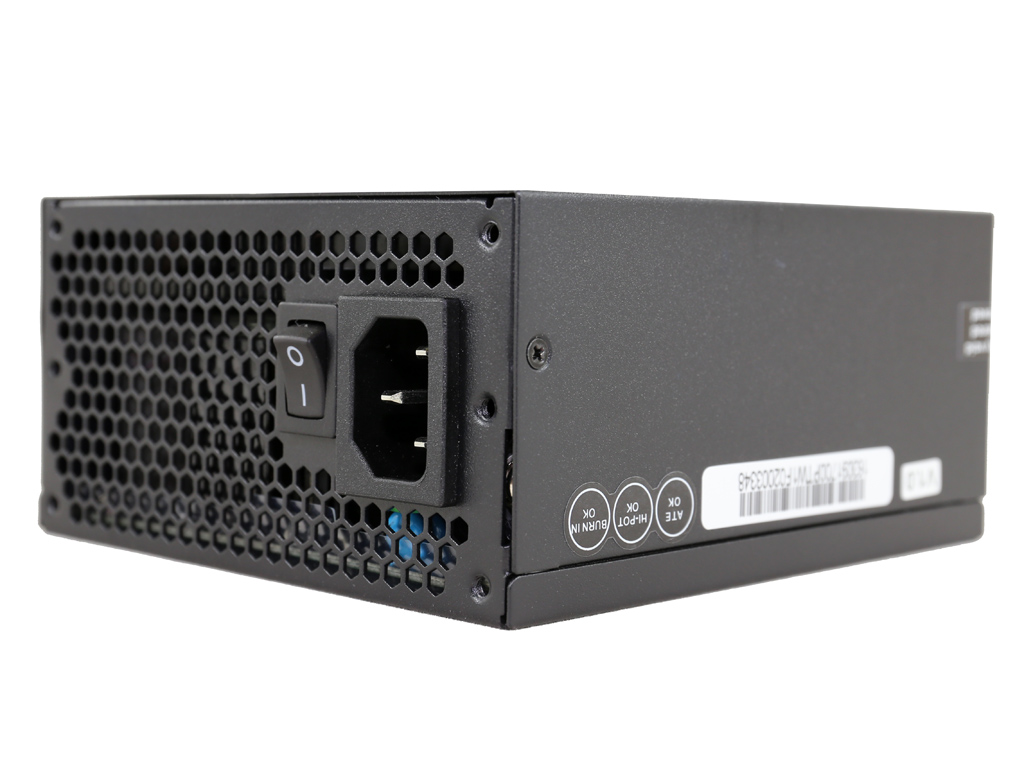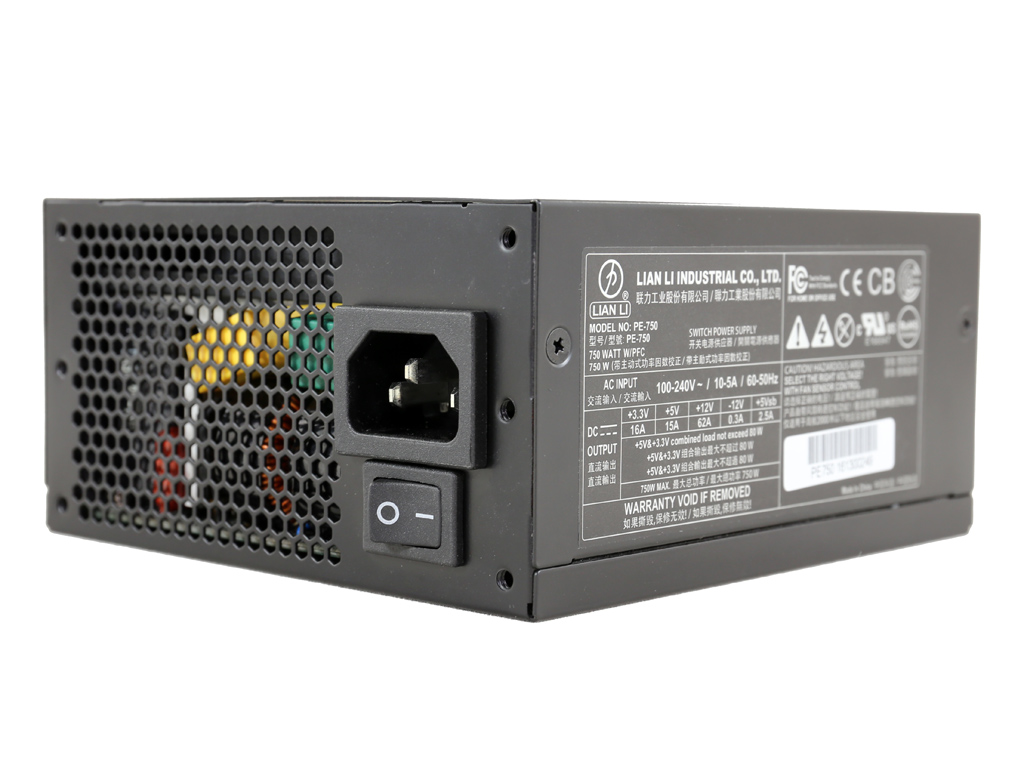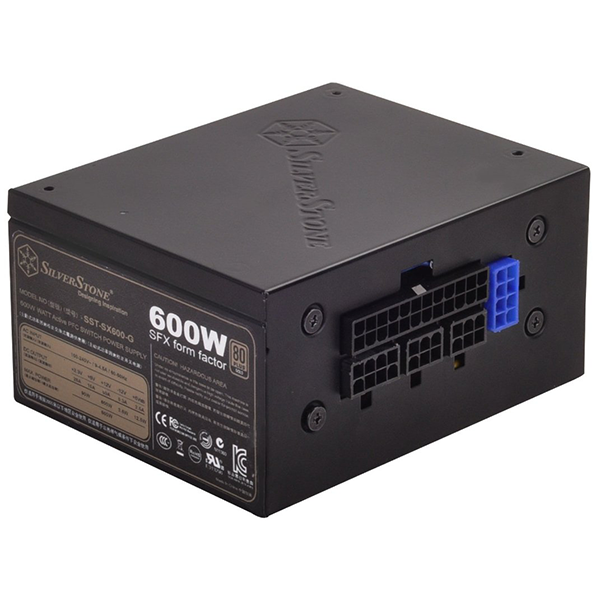SilverStone SFX Series SX700-LPT PSU Review
SilverStone released a powerful new SFX-L unit that boasts 700W capacity, Platinum-rated efficiency, fully modular cabling, and a single +12V rail. The SX700-LPT is based on a Sirfa platform and promises quiet operation thanks to its 120mm fan.
Why you can trust Tom's Hardware
Load Regulation, Hold-Up Time, And Inrush Current
To learn more about our PSU tests and methodology, please check out How We Test Power Supply Units.
Primary Rails And 5VSB Load Regulation
Load Regulation testing is detailed here.
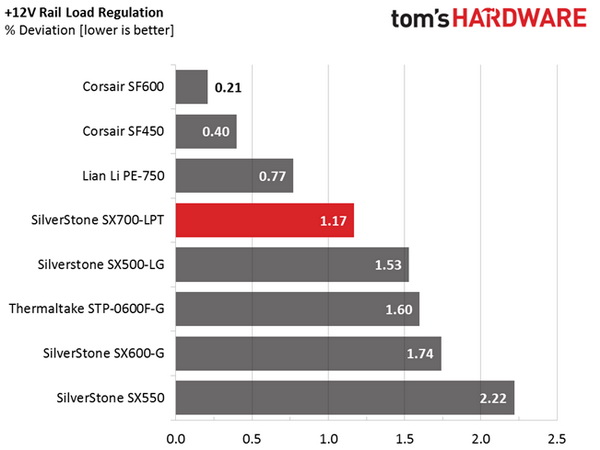
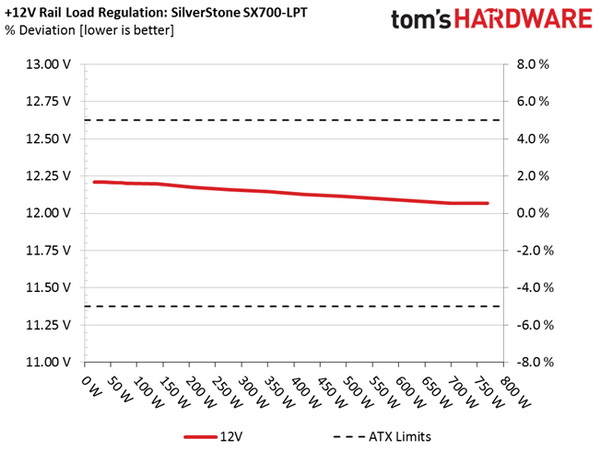
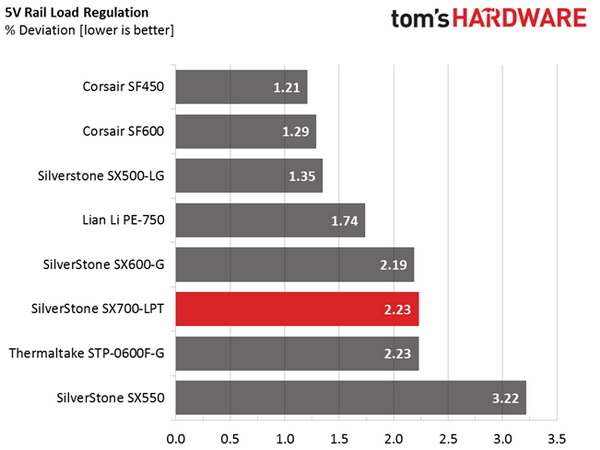
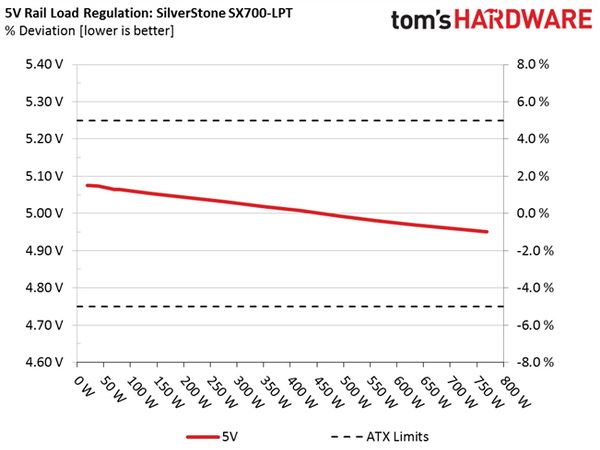
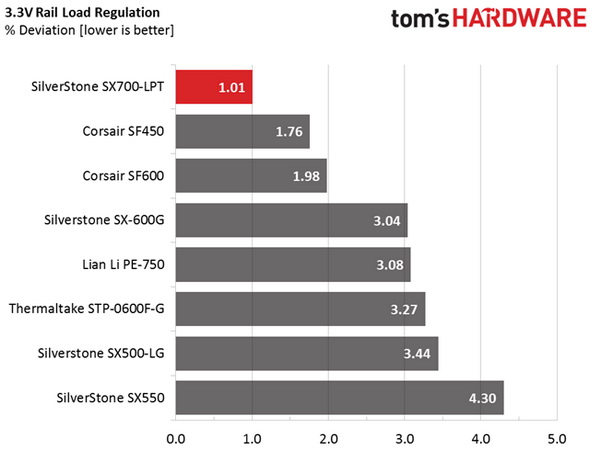
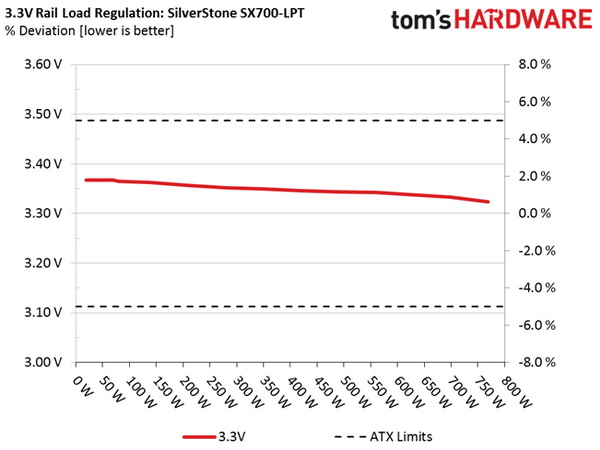
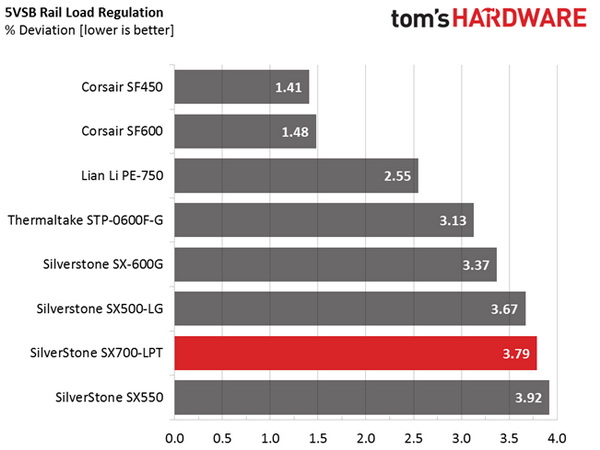
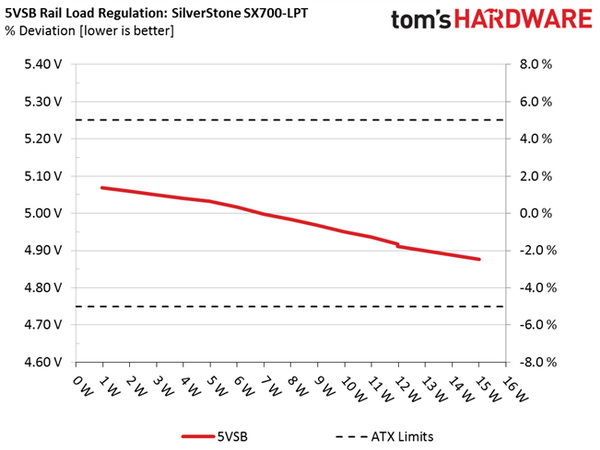
Hold-Up Time
Our hold-up time tests are described in detail here.
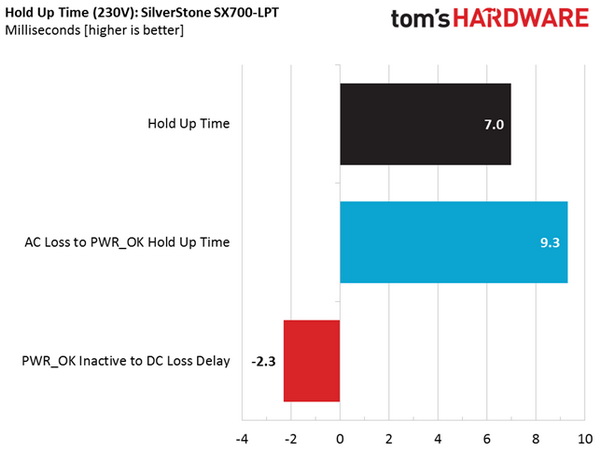
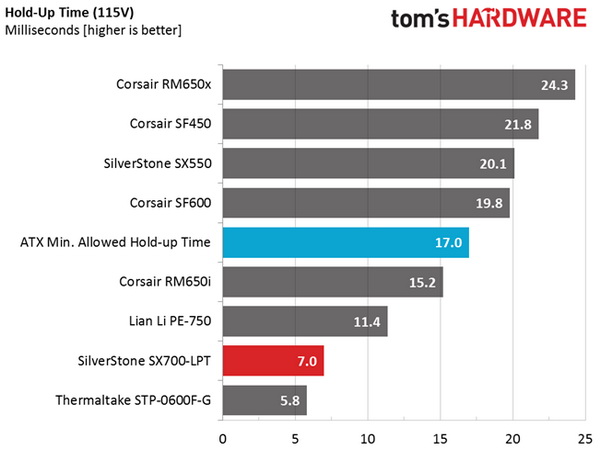
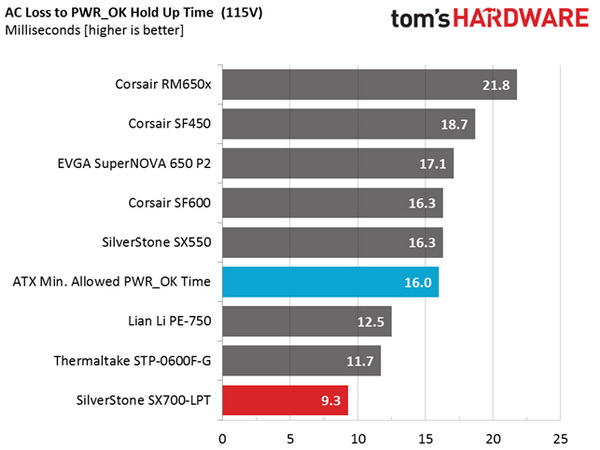
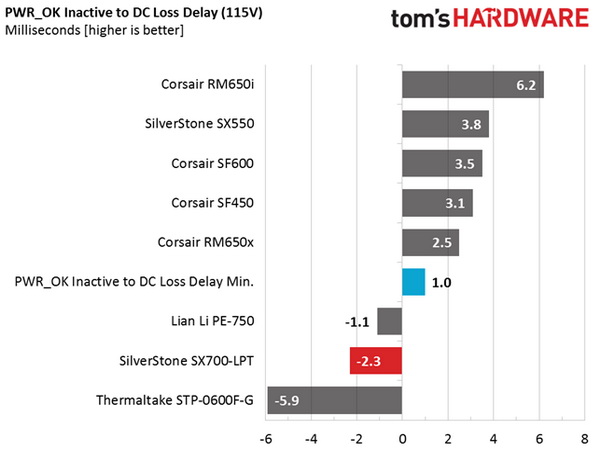
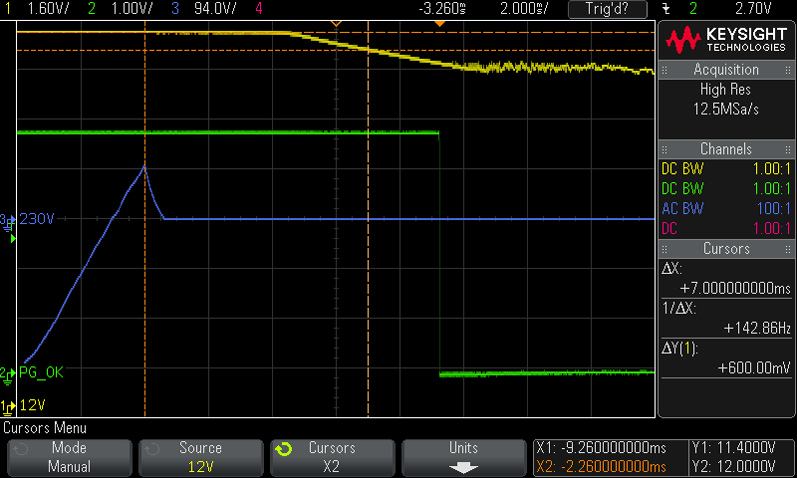
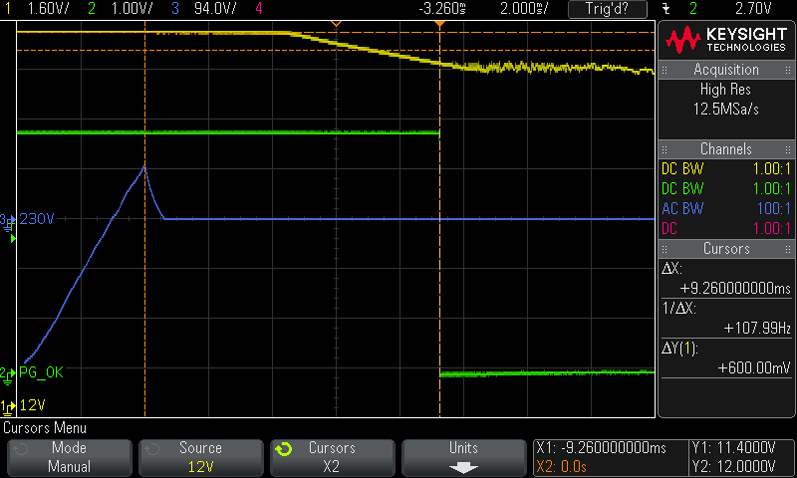
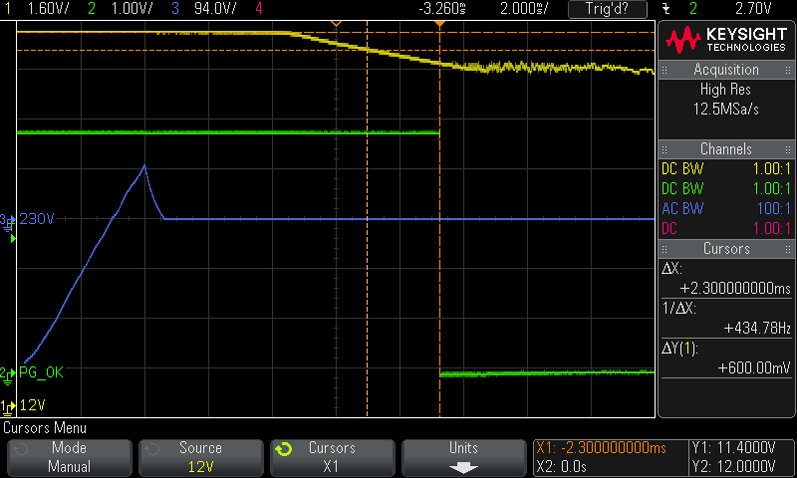
Besides a very low hold-up time result, we also stumble upon a false power-good signal. That's very disappointing.
Inrush Current
For details on our inrush current testing, please click here.
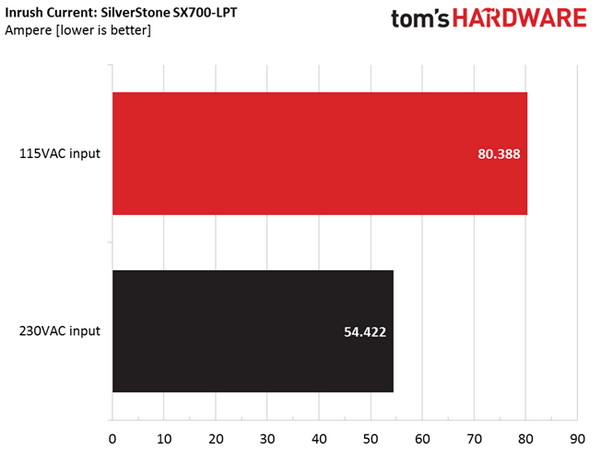
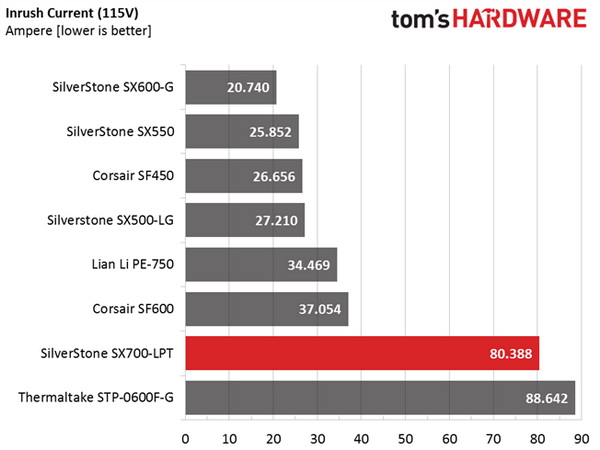
Observed inrush current is very high, especially with 115 V input.
Load Regulation And Efficiency Measurements
The first set of tests reveals the voltage rails' stability and SX700-LPT's efficiency. The applied load equals (approximately) 10 to 110 percent of the maximum load the supply can handle, in increments of 10 percentage points.
Get Tom's Hardware's best news and in-depth reviews, straight to your inbox.
We conducted two additional tests. During the first, we stressed the two minor rails (5V and 3.3V) with a high load, while the load at +12V was only 0.1A. This test reveals whether a PSU is Haswell-ready or not. In the second test, we determined the maximum load the +12V rail could handle with minimal load on the minor rails.
| Test # | 12V | 5V | 3.3V | 5VSB | DC/AC (Watts) | Efficiency | Fan Speed | Fan Noise | Temps (In/Out) | PF/AC Volts |
|---|---|---|---|---|---|---|---|---|---|---|
| 1 | 3.945A | 1.974A | 1.959A | 0.989A | 69.72 | 87.24% | 0 RPM | 0 dB(A) | 50.54°C | 0.972 |
| 12.205V | 5.065V | 3.367V | 5.032V | 79.92 | 46.65°C | 115.1V | ||||
| 2 | 8.924A | 2.959A | 2.940A | 1.195A | 139.68 | 90.71% | 0 RPM | 0 dB(A) | 51.75°C | 0.990 |
| 12.197V | 5.054V | 3.363V | 5.017V | 153.98 | 47.51°C | 115.1V | ||||
| 3 | 14.277A | 3.474A | 3.453A | 1.400A | 209.88 | 90.94% | 1650 RPM | 38.4 dB(A) | 40.94°C | 0.995 |
| 12.172V | 5.042V | 3.357V | 4.998V | 230.80 | 44.84°C | 115.1V | ||||
| 4 | 19.625A | 3.974A | 3.936A | 1.605A | 279.75 | 91.48% | 1660 RPM | 38.5 dB(A) | 41.48°C | 0.997 |
| 12.156V | 5.032V | 3.352V | 4.983V | 305.79 | 45.79°C | 115.1V | ||||
| 5 | 24.639A | 4.978A | 4.925A | 1.809A | 349.71 | 91.41% | 1700 RPM | 39.0 dB(A) | 41.93°C | 0.998 |
| 12.145V | 5.019V | 3.350V | 4.968V | 382.59 | 46.79°C | 115.1V | ||||
| 6 | 29.673A | 5.992A | 5.914A | 2.016A | 419.62 | 91.05% | 1770 RPM | 39.6 dB(A) | 42.88°C | 0.998 |
| 12.127V | 5.008V | 3.346V | 4.951V | 460.88 | 48.14°C | 115.1V | ||||
| 7 | 34.712A | 7.011A | 6.905A | 2.225A | 489.62 | 90.63% | 1805 RPM | 40.3 dB(A) | 44.08°C | 0.998 |
| 12.115V | 4.994V | 3.344V | 4.936V | 540.23 | 49.75°C | 115.2V | ||||
| 8 | 39.770A | 8.032A | 7.896A | 2.437A | 559.56 | 90.07% | 1860 RPM | 41.3 dB(A) | 44.26°C | 0.999 |
| 12.099V | 4.981V | 3.342V | 4.918V | 621.22 | 50.33°C | 115.2V | ||||
| 9 | 45.275A | 8.550A | 8.417A | 2.440A | 629.59 | 89.49% | 1885 RPM | 41.6 dB(A) | 45.42°C | 0.999 |
| 12.082V | 4.970V | 3.338V | 4.911V | 703.57 | 52.16°C | 115.1V | ||||
| 10 | 50.537A | 9.075A | 8.911A | 3.075A | 699.49 | 88.78% | 1885 RPM | 41.6 dB(A) | 45.57°C | 0.999 |
| 12.066V | 4.960V | 3.333V | 4.877V | 787.91 | 53.08°C | 115.1V | ||||
| 11 | 56.319A | 9.087A | 8.935A | 3.078A | 769.22 | 84.73% | 1885 RPM | 41.6 dB(A) | 46.19°C | 0.999 |
| 12.066V | 4.951V | 3.323V | 4.870V | 907.89 | 55.01°C | 115.1V | ||||
| CL1 | 0.101A | 14.024A | 14.005A | 0.000A | 118.84 | 82.80% | 1885 RPM | 41.6 dB(A) | 45.95°C | 0.990 |
| 12.182V | 4.990V | 3.401V | 5.065V | 143.53 | 53.90°C | 115.2V | ||||
| CL2 | 58.282A | 1.003A | 1.003A | 1.002A | 716.90 | 89.37% | 1885 RPM | 41.6 dB(A) | 46.07°C | 0.999 |
| 12.072V | 5.008V | 3.303V | 4.973V | 802.17 | 54.44°C | 115.1V |
Load regulation on the +12V rail is tight enough, although nowhere close to the performance of Corsair's SFX family or Lian Li's similar PE-750, which uses a platform provided by Enhance Electronics. The 5V rail demonstrates average load regulation, the 5VSB rail is pretty loose, and the 3.3V rail surprises us by registering the best load regulation among all competing units.
As far as efficiency goes, the 20% load requirement is met. SilverStone's SX700-LPT comes close enough to the mid- and full-load requirements to get a pass from us given our high-temp testing methodology.
The semi-passive mode looks like it works normally since, during the CL1 test when the load is low, the fan stays active and at full speed due to high temperatures inside the PSU. We certainly wouldn't call the fan quiet in that case; it starts at 1650 RPM. Of course, this has to do with the very tough conditions inside our hotbox.
Current page: Load Regulation, Hold-Up Time, And Inrush Current
Prev Page A Look Inside And Component Analysis Next Page Efficiency, Temperature, And Noise
Aris Mpitziopoulos is a contributing editor at Tom's Hardware, covering PSUs.
-
powernod Purely disappointing!!.Reply
A permanent flaw (false power-good signal), combined with a periodical flaw (far out of specs ripple if this unit gets overloaded), are more than enough evidence in order for me to conclude that this PSU is a potential danger for the rest of the hardware!!.
Once more, thanks for the great review Aris! -
basroil I looked at the internals first, and from that assumed this thing would be an utter mess. Surprisingly it's only a mess... If it was rated as a 550W unit I would have just said the holdup time was disappointing, but as a 700W rated unit this thing goes in the junk list.Reply
And seriously, what were they thinking with that layout? One short and the thing will definitely fry and take down your circuit breaker with it. Considering the number of missed surface mount solder points, shorts are going to be likely.
